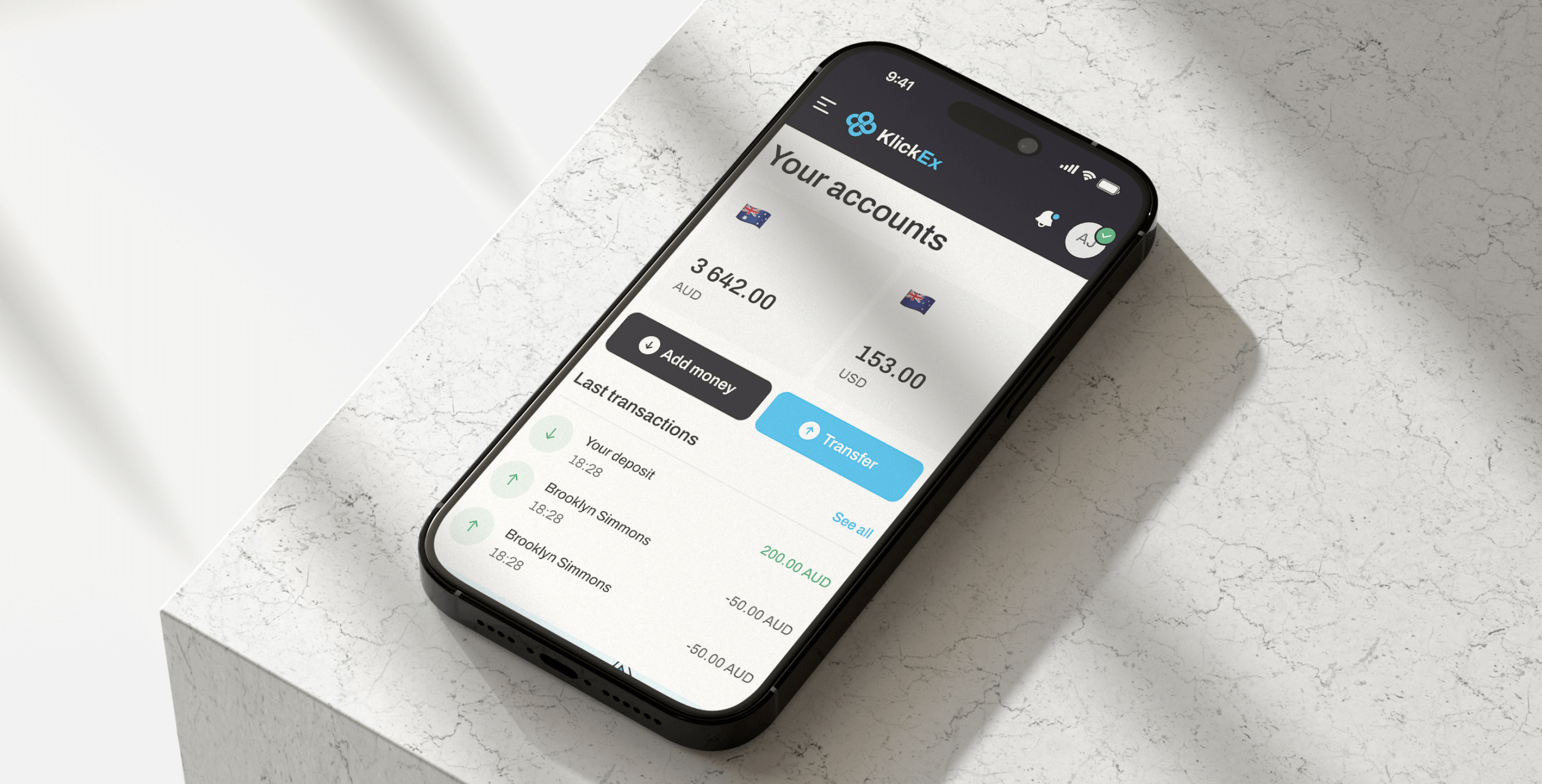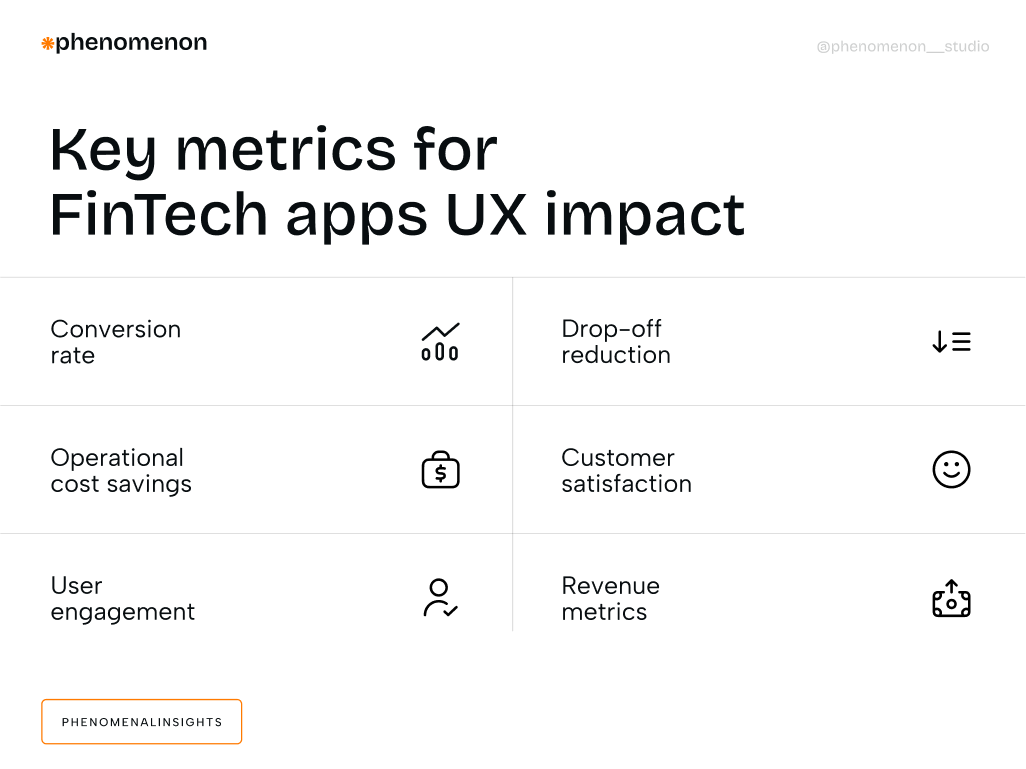Learn strategic frameworks for securing stakeholder approval for FinTech redesigns. Address compliance, security, and ROI concerns effectively.
Getting stakeholder approval for a FinTech product redesign isn’t just about presenting a good idea. It requires navigating complex regulatory requirements, addressing security concerns, and aligning diverse priorities across your organization. The stakes are higher in financial technology, where a single misstep can result in compliance violations, security breaches, or lost customer trust. Additionally, rising customer expectations for security, usability, and personalization in the fintech industry make it even more critical to deliver a seamless and trustworthy user experience.
This guide provides a strategic framework for securing stakeholder buy-in for your FinTech product redesign. You’ll learn how to identify key stakeholders, craft compelling business cases, and demonstrate tangible value while addressing the unique challenges of the financial technology sector within the broader fintech industry and its rapidly evolving landscape.
Introduction to FinTech UX Design
FinTech UX design is at the heart of creating successful financial apps, services, and products in today’s digital-first world. As financial companies compete to deliver seamless digital banking experiences, the importance of user-centered design has never been greater. FinTech UX design focuses on making financial transactions and management intuitive, secure, and accessible for all users. With the rapid growth of digital banking and mobile financial apps, user expectations are higher than ever—people demand fast, easy, and reliable ways to manage their finances.
To meet these expectations, FinTech companies must prioritize user feedback and leverage user research methods to understand real-world needs and pain points. By staying on top of the latest UX design trends and continuously gathering insights from users, financial organizations can create user-friendly interfaces that motivate users to engage with their financial apps and services. Ultimately, a strong focus on FinTech UX design helps companies build trust, drive adoption, and maintain a competitive edge in a crowded market.
A great example of effective FinTech UX design in action is KlickEx—a cross-border payment platform serving Pacific Island communities. Our team redesigned the entire platform with a mobile-first approach, simplifying complex flows such as money transfers and KYC verification. This resulted in a 35.3% increase in Add Money conversions and a 30.7% improvement in Money Transfer flows. Thanks to improved usability, the platform now sees 3,000 new users monthly, growing to over 53,000 active users. With an interface tailored to local needs and limited connectivity conditions, KlickEx became a vital financial bridge in the region—proof that thoughtful, research-based UX design can drive both social impact and business results.

Understanding the Unique Challenge of FinTech Product Redesign
FinTech product redesigns face a fundamental tension that other industries don’t encounter. While your business demands rapid innovation to stay competitive, you must simultaneously meet stringent regulatory requirements and maintain robust security measures.
This creates competing priorities that can paralyze decision-making. Marketing teams push for features that drive user acquisition, while compliance teams focus on risk mitigation. Engineering prioritizes technical feasibility, and executives demand clear ROI projections.
The Trust Triad in FinTech
Every FinTech product redesign must be built on three foundational elements:
Regulatory Compliance: Adherence to GDPR, PCI DSS, AML, and KYC regulations isn’t optional. Non-compliance can result in severe financial penalties and forced market exits.
Data Security: Financial platforms are prime targets for cybercriminals. A single breach can destroy years of trust-building and result in substantial financial losses.
Customer Trust: Users must feel confident that your platform protects their sensitive financial information while providing an intuitive experience.
A weakness in any one area cascades to the others. Poor security leads to breaches, which trigger regulatory fines and destroy customer confidence. This interconnectedness means your redesign must strengthen all three pillars simultaneously. To maintain user trust, ensure consistent security and compliance practices are embedded throughout your platform.
Map Your Stakeholder Landscape
Successful FinTech redesigns require buy-in from both internal and external stakeholders, each with distinct priorities and concerns. Financial brands play a key role in shaping stakeholder expectations and credibility in fintech projects.
Internal Stakeholders
Your internal stakeholders span multiple departments, each championing different organizational priorities:
- Product teams: Focus on user experience and feature functionality
- Engineering: Prioritize technical feasibility and system scalability
- Legal and compliance: Emphasize risk mitigation and regulatory adherence
- Marketing: Concentrate on user acquisition and market positioning
- Customer support: Advocate for reduced complexity and clearer user flows
- UX designer: Specializes in creating user-friendly, secure, and compliant fintech experiences.
External Stakeholders
External stakeholders often act as gatekeepers for your redesign success:
- Customers: Demand intuitive experiences without compromising security
- Regulators: Ensure compliance with evolving financial regulations
- Investors: Require clear ROI projections and risk assessments
- Partner institutions: Need seamless integration capabilities, including with digital banks (such as neobanks and online-only banking services) that prioritize user-friendly experiences
Use the Power-Interest Grid for Strategic Engagement
Prioritize your stakeholder engagement using a Power-Interest Grid that maps stakeholders based on their decision-making authority and investment level in your project:
High Power, High Interest: Executive leadership, key regulators, core product teams. Engage these stakeholders closely with frequent consultation and detailed updates.
High Power, Low Interest: Board members, major payment networks. Keep them satisfied with concise, high-level updates without overwhelming them with daily details.
Low Power, High Interest: End-users, customer support teams, junior developers. Keep them informed and solicit their feedback regularly, actively gather feedback from these groups to inform design decisions and ensure your platform remains user-centered, as they can become powerful advocates.
Low Power, Low Interest: General public, minor vendors. Monitor their needs but focus resources on higher-priority stakeholders.
Build Your Compelling Business Case
A strong business case transforms your redesign from a nice-to-have into a strategic necessity. This requires moving beyond feature lists to demonstrate clear business value. Referencing industry best practices can further strengthen your business case and ensure alignment with stakeholder expectations.
Start with Clear Problem Statements
Define specific pain points in your current user experience or unmet market demands. In FinTech, your problem statements often involve dual challenges: addressing user friction while mitigating financial risks. It’s crucial to avoid overwhelming users with complex processes, so focus on simplifying experiences to ensure intuitive and accessible interfaces.
For example, instead of “make onboarding faster,” frame it as “reduce onboarding time by 40% while improving fraud detection accuracy by 25%.” This demonstrates how your redesign enhances both user experience and security compliance.
Ground Your Strategy in Data
Build your business case on comprehensive data that removes biases and provides objective evidence:
- Market research: Industry trends and competitive analysis
- User research: Customer interviews and usability testing results to gather user insights that inform data-driven decisions
- Performance metrics: Current conversion rates, drop-off points, and support ticket volumes
- Financial data: Revenue impact, operational costs, and compliance audit outcomes
In FinTech, your data must extend beyond typical UX metrics to include financial performance indicators, security incident rates, and compliance outcomes. This multi-faceted approach strengthens your business case by addressing diverse stakeholder concerns.
Articulate Your Value Proposition
Your value proposition should explicitly address the “hidden complexity” of financial products. Many FinTech solutions appear simple on the surface but conceal intricate regulatory, security, and infrastructure challenges.
Focus on how your redesign simplifies complex financial tasks while strengthening security and compliance. Good fintech UX design prevents errors, provides clear validation checks and error messages, and enhances user satisfaction by making financial applications more intuitive and user-friendly. This dual benefit resonates with both end-users seeking ease of use and business stakeholders concerned with adoption and regulatory adherence.
Designing for FinTech UX
Designing for FinTech UX goes beyond aesthetics—it’s about deeply understanding how users interact with financial apps and the unique challenges they face when completing financial tasks. FinTech UX designers must consider user behavior, anticipate user needs, and create user journeys that make complex financial operations feel simple and secure. Achieving a smooth user experience requires balancing usability with the strict demands of security and compliance.
To do this, UX designers rely on user research methods such as interviews, usability testing, and mapping user journeys to uncover pain points and opportunities for improvement. Feedback loops are essential, allowing teams to iterate on designs based on real user input and ensure that every interaction is intuitive and frustration-free. Clear error messages, intuitive interfaces, and thoughtful user flows help users navigate financial tasks with confidence, reducing friction and building satisfaction. By focusing on these elements, FinTech UX designers can deliver experiences that not only meet but exceed user expectations.
Key Principles for FinTech User Experience
The foundation of a great FinTech user experience lies in simplicity, clarity, and security. FinTech UX design should always take a user-centric approach, using user feedback and ongoing user research to inform every decision. Intuitive interfaces are key—users should be able to accomplish financial tasks quickly and without confusion.
Staying current with UX design trends is also vital. Innovations like voice user interfaces, biometric data authentication, and machine learning algorithms are transforming how users interact with financial products. By integrating these technologies thoughtfully, UX designers can create financial apps that are not only secure and efficient but also engaging and future-ready. Ultimately, the best FinTech user experiences are those that anticipate user needs, minimize complexity, and inspire trust.
Balancing Security, Compliance, and Usability
In FinTech UX design, achieving the right balance between security, compliance, and usability is essential. FinTech companies must ensure their financial apps and services comply with stringent financial regulations, such as anti-money laundering (AML) and know-your-customer (KYC) requirements, without sacrificing the user experience. This means designing user-friendly interfaces that are easy to navigate, while seamlessly integrating robust security measures like biometric authentication and data encryption.
A seamless user experience doesn’t have to come at the expense of security. By embedding compliance requirements into the design process and prioritizing clear, transparent communication with users, FinTech companies can build trust and keep users engaged. The result is a financial app that not only meets regulatory standards but also delights users with its ease of use and reliability.
Develop Strategic Communication Plans
Effective communication transforms potential resistance into enthusiastic support. Your communication strategy must address the inherent trust gap between financial institutions and their customers, as well as between innovators and regulators. Clearly communicating user interface improvements to stakeholders is essential for building confidence in the redesign and demonstrating a commitment to enhanced usability and accessibility.
Tailor Your Message to Each Audience
Present your redesign concepts differently to technical teams versus non-technical executives:
For Technical Teams: Focus on implementation details, system architecture, and integration challenges. Use technical specifications and detailed wireframes.
For Executives: Emphasize business value, ROI projections, and strategic alignment. Use high-level mockups and clear benefit statements, and highlight the visual appeal of the new design to demonstrate its value.
For Compliance Teams: Highlight security features, regulatory adherence, and risk mitigation strategies. Provide detailed compliance documentation.
Use Visual Communication Effectively
Leverage visual aids to convey complex financial concepts:
- Annotated UI mockups: Show how security features integrate seamlessly into user flows
- Process flowcharts: Illustrate compliance checkpoints within user journeys and map the user journey to demonstrate how security and compliance are integrated throughout the experience
- Demo videos: Demonstrate how the redesign simplifies complex financial tasks
- Before/after comparisons: Highlight improvements in user experience and security
Implement Continuous User Feedback Loops
Embed feedback collection throughout your design process:
Early Stage: Concept validation through stakeholder workshops and user interviews
Mid-Stage: Usability testing and iterative refinement based on user feedback
Late Stage: Post-launch monitoring and continuous improvement based on performance data, with a focus on tracking customer retention as a key metric for ongoing success.
In FinTech, feedback loops serve dual purposes: product improvement and continuous risk assessment. User confusion about consent screens signals both UX issues and potential regulatory risks, making feedback a proactive risk management tool.
Address Resistance and Build Trust
Resistance to change is natural, especially in high-stakes financial environments. Proactive strategies can transform skeptics into advocates.
Use Constraint-First Thinking
Map out all non-negotiable constraints before proposing solutions:
- Legal requirements: Regulatory compliance standards
- Technical limitations: Legacy system integration requirements
- Business dependencies: Partner agreements and SLA commitments
- Security protocols: Data protection and fraud prevention measures
By establishing these boundaries upfront, you set realistic expectations and avoid wasting time on non-viable solutions.
Create Stakeholder Heat Maps
Identify individuals with high influence over specific features or project aspects. In FinTech, legal departments may have veto power, and risk teams might enforce policies that contradict product intuition. Involve these high-influence stakeholders early to prevent costly rework.
Build Roadmaps with Buffers
Account for unexpected events like external audits, policy changes, or fraud spikes. Prioritize resilient roadmaps over fast ones to maintain confidence when surprises occur.
Implementing the Redesign
Implementing a redesign for a FinTech app or service is a complex process that requires careful coordination and a relentless focus on user expectations. Success hinges on thorough planning, gathering actionable feedback from users, and rigorously testing the new design to ensure it delivers a superior user experience. Every step of the process should be guided by a commitment to meeting—and exceeding—what users expect from their financial apps.
Aligning Teams and Resources
A successful FinTech UX redesign depends on aligning teams and resources around a shared vision for user experience. This means fostering close collaboration between UX designers, product managers, developers, and other stakeholders to ensure that the redesign addresses both business goals and user needs. By prioritizing a user-centric approach and actively incorporating user feedback throughout the process, FinTech companies can create financial apps that deliver a seamless user experience and drive customer satisfaction.
Ongoing user research and testing are critical to staying ahead of evolving user expectations and maintaining a competitive edge. By continuously gathering insights and iterating on the design, FinTech companies can ensure their apps remain user-friendly, relevant, and trusted in a rapidly changing market. This commitment to user needs not only enhances customer satisfaction but also supports long-term retention and growth.
Demonstrate Tangible ROI
Quantifiable metrics resonate with financial and business leaders more than qualitative benefits. User satisfaction is a critical metric for measuring the success of a fintech UX redesign, as it directly impacts retention, trust, and the overall effectiveness of the platform.
Key Metrics for FinTech Apps UX Impact

Conversion Rate: Good UI can increase conversion by 200%, while good UX can reach 400% improvement.
Drop-off Reduction: Lower abandonment rates during critical flows like onboarding or payment processing.
Operational Cost Savings: Fewer support tickets, reduced development rework, and decreased fraud prevention costs.
Customer Satisfaction: CSAT and NPS scores that indicate user loyalty and brand health.
User Engagement: Track how users stay engaged with the app through features like gamification, micro-interactions, and incentives, which signal effective UX.
Revenue Metrics: Lifetime value, monthly recurring revenue, and average revenue per user.
Focus on Risk Mitigation
In FinTech, preventing losses is as valuable as generating revenue. Effective UX design in investment management platforms can reduce errors and mitigate financial risks, ensuring complex financial processes are both functional and user-friendly. Quantify costs avoided through:
- Reduced fraud incidents
- Avoided compliance fines
- Decreased customer churn
- Lower operational overhead
Learn from Success Stories
Industry data consistently supports UX investment value:
- Forrester research shows every dollar invested in UX yields $100 in return
- Companies prioritizing design show 32% higher revenue growth
- Bitcoin of America achieved 67% increase in account conversions through UX optimization
- Design systems provide approximately 135% ROI within five years. These improvements directly benefit fintech users by delivering more secure, user-friendly platforms that meet their expectations for real-time data and trustworthy experiences.
Take Action on Your FinTech Redesign
Winning stakeholder buy-in for FinTech product redesign requires strategic alignment of diverse interests, unwavering transparency, and demonstrable business value. The process demands more than presenting good ideas – it requires building trust through security, meeting compliance requirements, and proving ROI through quantifiable metrics.
Start by mapping your stakeholder landscape and understanding their unique priorities. Build your business case on comprehensive data that addresses both user needs and business constraints. Incorporate specialized UX design for fintech to ensure trust, security, and usability, which are critical for empowering users and meeting industry regulations. Communicate strategically with tailored messages for different audiences, and proactively address resistance through transparency and early involvement.
Remember that this is an ongoing process, not a one-time event. The FinTech landscape evolves rapidly, requiring continuous stakeholder engagement and adaptive strategies.
Ready to transform your FinTech product with a redesign that wins stakeholder buy-in and drives measurable results? Phenomenon Studio specializes in navigating the complex requirements of financial technology redesigns. Our team understands the unique challenges of balancing user experience with regulatory compliance and security requirements. Contact us today to discuss how we can help you build the stakeholder support and business case needed for your next redesign project.













